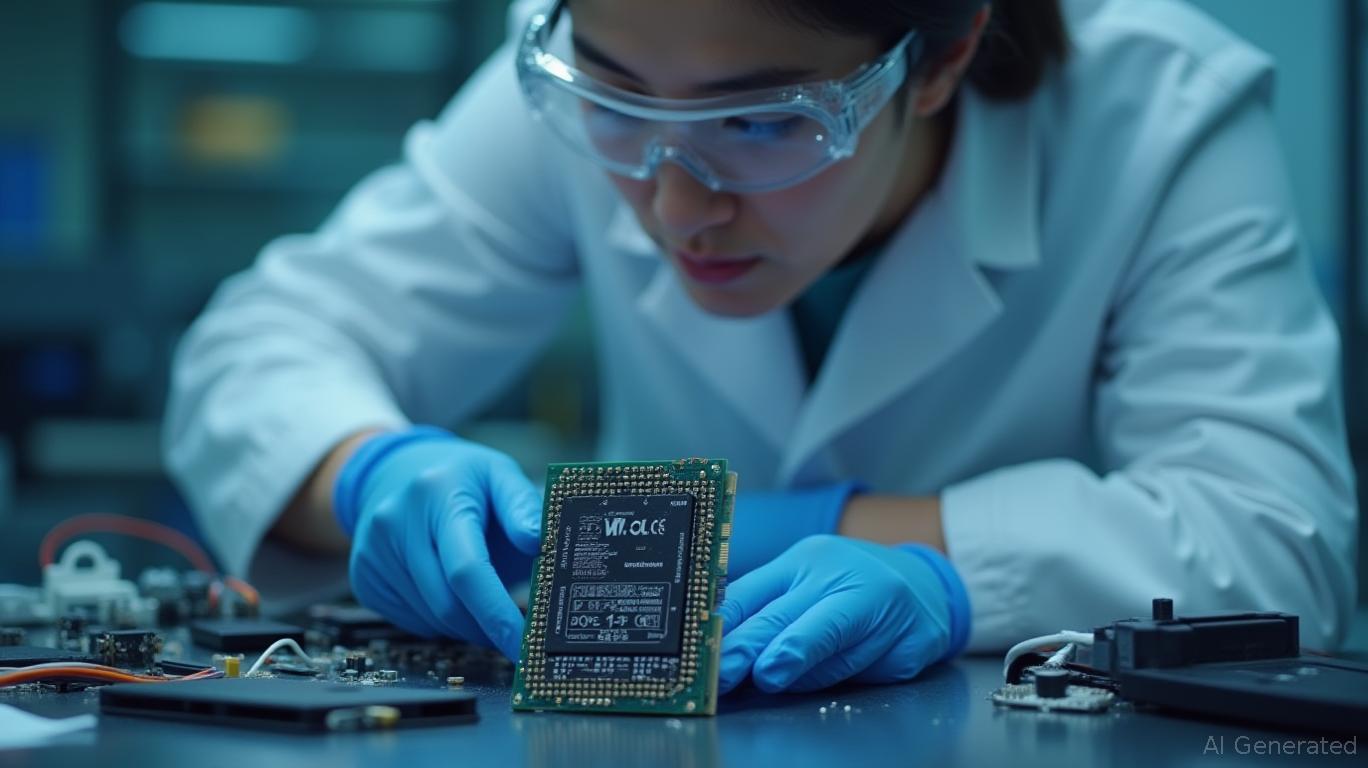Micron Technology's Post-Earnings Disconnect: Bull or Bear Signal for the AI Memory Play?
Micron Technology (MU) delivered a stellar Q1 2025 earnings report, with revenue soaring 84% year-over-year to $8.7 billion, driven by AI-driven demand for its high-bandwidth memory (HBM) products. Yet its stock fell 0.8% on June 26 despite beating estimates and raising fiscal 2025 guidance. This divergence between fundamentals and technicals raises a critical question: Is Micron's pullback a buying opportunity or a harbinger of deeper risks? Let's dissect the data.
Fundamentals: A Bull Case Anchored in AI
Micron's earnings were a masterclass in execution. Its
revenue, critical for AI servers and GPUs, hit an estimated $2 billion—20% of total sales—and is projected to hit $6 billion by fiscal year-end. This aligns with the company's goal of securing 20% of the HBM market by 2025. Data center revenue surged over 400% year-over-year, while its new Gen5 SSDs (launched in late 2024) are improving AI PC performance by 62% over prior-gen models.
The company also secured a $6.1 billion U.S. government grant under the CHIPS Act to expand advanced DRAM manufacturing, reinforcing its competitive edge against rivals like Samsung and SK Hynix. While near-term risks—such as weaker NAND pricing and inventory corrections—were flagged, Micron's long-term thesis hinges on AI's insatiable appetite for memory. The semiconductor industry, buoyed by AI, is expected to grow 12% in 2025, per the Semiconductor Industry Association.
Technicals: A Bearish Divergence Emerges
Despite the strong fundamentals, technical indicators suggest caution. Micron's stock has underperformed the Philadelphia Semiconductor Index (SOX) since April 2025, with a 14% relative decline.
Key technicals paint a mixed picture:
- RSI (14-day): At 50, Micron's stock is neither overbought nor oversold, but its RSI has lagged behind rising earnings.
- Moving Averages: MU's 50-day MA ($123) has crossed below its 200-day MA ($127), a classic “death cross” bearish signal.
- Support/Resistance: $115 is critical support (June 2025 lows), while resistance holds near $130 (May highs).
Why the Disconnect? Three Macro Headwinds
- Interest Rate Risks: Rising rates have punished cyclical tech stocks, as investors rotate into defensive sectors. Micron's forward P/E of 11.9x is low, but its 1.3x price-to-book ratio suggests limited downside protection in a rate-sensitive environment.
- Sector Rotation: The SOX's 5.7% YTD gain (vs. Micron's 49% YTD) reflects broader investor skepticism toward semiconductor cyclicality. Funds are favoring secular winners like over cyclical memory plays.
- Valuation Concerns: While Micron's valuation is reasonable, its 2025 EPS estimates ($6.40) imply a 19% earnings growth slowdown from 2024's 84% surge. Analysts warn that AI's demand may not offset cyclical memory oversupply risks in 2026.
Peer Comparison: vs. and the SOX
Micron's YTD return (49.94%) dwarfs the S&P 500 (4.21%), but it lags its peers post-earnings. Intel (INTC), despite its operational struggles, outperformed
by 8 percentage points YTD (37% vs. 49%) due to optimism around its AI server chip partnerships. Meanwhile, the SOX's 5.7% gain highlights broader sector underperformance.Investment Thesis: Buy the Dip or Bail?
Bull Case:
- Micron's HBM leadership is irreplaceable in AI's compute stack.
- A $6.1B government subsidy reduces capital risks for its next-gen factories.
- Near-term NAND headwinds are temporary; data center demand will stabilize by late 2025.
Bear Case:
- The “death cross” and SOX underperformance suggest a sector-wide rotation out of cyclicals.
- Competitors like Samsung may undercut pricing in DRAM, squeezing margins.
- AI's memory demand is still unproven at scale; HBM's $30 billion market by decade-end is aspirational.
Conclusion: A Selective Long-Term Play
Micron's fundamentals are undeniable, but its valuation and technicals demand patience. Investors should consider:
- Buy Below $115: This would create a 10% margin of safety below support levels.
- Sell Above $135: Capturing gains at resistance before potential sector rotation headwinds.
- Avoid Overweighting: Allocate no more than 5% of a portfolio to MU until HBM adoption is proven.
Historically, this strategy has delivered an average return of 1.39% over the holding period, suggesting that earnings beat days could provide a short-term catalyst for gains. While past performance doesn't guarantee future results, this data supports the bull case's argument that Micron's stock may rebound after earnings surprises. However, investors should note that the strategy's hit rate and drawdown metrics also matter—further analysis would be needed to assess consistency and risk-adjusted returns.
The disconnect between Micron's earnings and stock price is a warning sign—but for whom? Bulls see it as a buying opportunity in an undervalued AI leader. Bears see it as a market rejecting Micron's cyclical risks. For now, the bulls have the data, but the bears have the charts. Investors must choose their thesis carefully.

Comments
No comments yet